Teflon is a household name, found in many homes as the cookware of choice. It is easy to understand why.
Non-stick pots, pans and bakeware are extremely convenient to use and of course to clean. Who wants to spend hours scrubbing cooked on food off after cooking a meal?
But What Exactly Is Teflon?
Teflon is the trademarked name for the chemical Polytetrafluoroethylene (PTFE). It is used in a variety of ways, because it is very non-reactive, due to the strength of the carbon-flourine bonds.
It is also ‘hydrophobic’ meaning that it cannot be wet by water.
It is therefore a popular choice for cook-ware, as well as stain resistant clothes (such as school uniform) and stain resistant carpets.
PTFE is also used as a repellant of grease in food wrap, and containers including pizza boxes and microwave popcorn bags.
So What Is The Problem?
It is in widespread use, and has been since the 1940s, so why are we worried about it all of a sudden?
Manufacturers of Teflon have always advised that their cookware should not be heated to extremely high temperatures. They have maintained that the coatings on pans and other Teflon products will not emit hazardous chemicals through normal use.
“significant decomposition of the coating will occur only when temperatures exceed about 660 degrees F (340 degrees C). These temperatures alone are well above the normal cooking range.”
However, the following quote taken from the Environmental Working Group (EWG) suggests otherwise:
In new tests conducted by a university food safety professor, a generic non-stick frying pan preheated on a conventional, electric stovetop burner reached 736°F in three minutes and 20 seconds, with temperatures still rising when the tests were terminated.
A Teflon pan reached 721°F in just five minutes under the same test conditions, as measured by a commercially available infrared thermometer.
DuPont studies show that the Teflon off-gases toxic particulates at 446°F.
At 680°F Teflon pans release at least six toxic gases, including two carcinogens, two global pollutants, and MFA, a chemical lethal to humans at low doses.
At temperatures that DuPont scientists claim are reached on stovetop drip pans (1000°F), non-stick coatings break down to a chemical warfare agent known as PFIB, and a chemical analog of the WWII nerve gas phosgene.
So in just two to five minutes of normal stovetop use, the coating of burnt Teflon breaks down to a point at which it releases toxic chemicals into the environment – which is typically your kitchen.
The other concern is that particles of PTFE can flake off, but it is thought that this does not cause harm when ingested as the chemical is inert when solid.
What Harm Can Teflon Cause To Health?
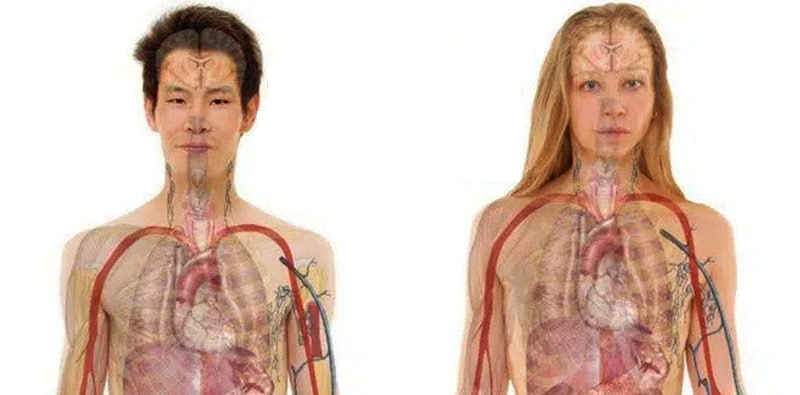
The fumes released from non-stick cookware have been known to be highly toxic to birds, as many pet birds die from ‘Teflon toxicosis’ each year.
This is caused when their lungs hemorrhage and fill with fluid, causing suffocation. The deaths usually occur during or immediately after using non-stick cookware, in normal scenarios.
When humans are exposed to the fumes they can experience a condition known as ‘polymer fume fever’. This is characterized by flu-like symptoms, including headaches, chills, fever, coughing and chest tightness.
The side effects do not usually develop until a few hours after exposure to the gases, and therefore many people do not make a connection between the cause and effect.
The long-term effects of such exposure has not been studied. It is possible that many cases that we assume are ‘normal-flu’ are actually caused by Teflon.
As well as health concerns, the manufacture of non-stick compounds including PFCs also pose a serious risk to the environment.
The U.S. Environmental Protection Agency says PFCs present “persistence, bioaccumulation, and toxicity properties to an extraordinary degree.“
You might be interested to learn if Teflon is now banned globally, providing a comprehensive overview of its current status and regulatory measures.
Is It Possible To Use Teflon Safely?
The best option is to avoid non-stick cookware altogether. Safer choices are cast iron and stainless steel pots and pans. Oven-safe glass is the preferred choice for baking.
However, if you currently have non-stick, or teflon products, and are not in a position to change any time soon, there are measures that you can take to protect yourself and your family as much as possible.
Firstly, never preheat non-stick pans at a high heat. This scenario is one that must be avoided at all costs.
When cooking with non-stick cookware, opt for the lowest possible temperature, while insuring that your food is cooked through safely. Do not use teflon bakeware in the oven over 500 degrees.
Always use the extractor fan when using non-stick pans on the stove to remove some of the gases that might be emitted.

Also, be sure to keep pet birds out of the kitchen!
Another thing to be aware of is the self-cleaning function inside your oven. If you have this, do not use it. The high temperatures can cause toxic fumes to be released from the non-stick interior surface.
So while there are no conclusive reports, or long-term studies on the implications of using Teflon and other non-stick cookware regarding human health, there is enough evidence to suggest we should avoid it where possible.
Would you like a side of polytetrafluoroethylene with your eggs? Me neither! I have opted for cast iron and stainless steel in my kitchen.
What are your thoughts? Do you have any experience, positive or negative of using non-stick pans? Do you skip the non-stick?
How to Safely Use Teflon Pans
Many kitchens use non-stick cookware that does cooking and cleaning a breeze.
Teflon is a polymer that was a chemical miracle in the 1930s; it is so unreactive that food molecules cannot link to it and slide right off. Polytetrafluoroethylene, or PTFE, is its chemical name.
PTFE is one of around 4,700 molecules that make up the PFAS (polyfluoroalkyl substances) family of chemicals, popularly known as “forever chemicals.”
They are a kind of synthetic chemical for making fiber-based food packaging water and oil resistant.
Teflon, on the other hand, has been PFOA-free since 2013.
For safe and ordinary home cooking, do not let the temperatures exceed 500°F when using Teflon.
So, on the cooktop, use your non-stick cookware on low-to-medium heat, but not on high heat or for higher cooking techniques like broiling.
Teflon cookware is a healthy and easy method to prepare your meals that are also safe to use daily.
You can cook securely with Teflon by following a few straightforward safety measures in the kitchen.
1. Use pans that are PFOA-free
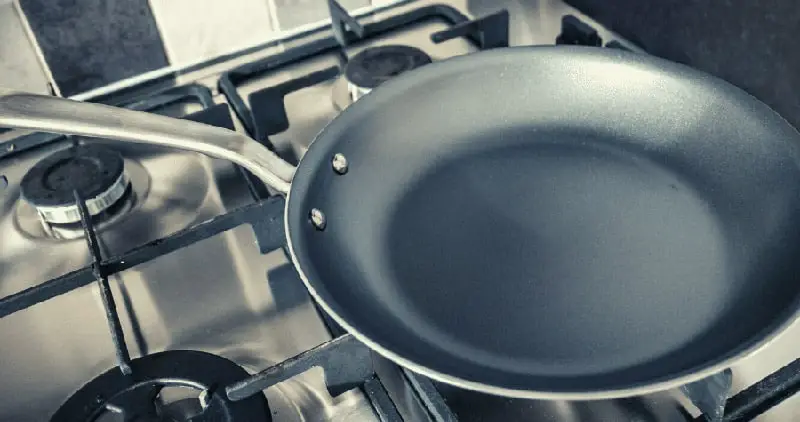
Check your cookware labels to say PFOA-free and that you are using non-stick pans made after 2013.
2. Make use of the appropriate cooking utensils
Do not use cooking utensils made of metal or other abrasive materials to protect the PTFE surface of your pan. Instead, use wooden, plastic, or silicone cooking implements to stir and flip your meal.
3. Don’t preheat a non-stick pan that isn’t filled
Add food or liquid before you apply any heat to your non-stick pans. An empty pan will soon reach dangerously high temperatures, posing a risk of polymer fumes escaping.
4. Stay away from extreme heat
When cooking on high heat or broiling, it is better to avoid using non-stick pans. These cooking methods often need temperatures over the PTFE surface’s specified limit.
We suggest using Stainless Clad, Carbon Steel, or Cast Iron Cookware instead if you often cook with high heat.
5. Maintain proper storage
Store your pans correctly to keep their non-stick surface. Hanging is ideal instead of stacking them. If you have to stack them in a cabinet, use a dishcloth or a pan guard to preserve the surfaces.
6. Hand-washing
Dishwashers and aggressive detergents may cause a non-stick surface to degrade. Hand wash your pans in the sink with warm water and mild soap instead of putting them in the dishwasher.
7. Replace any cookware that has become rusted
When the surface of a non-stick pan becomes worn or scraped, you run the danger of inhaling polymer vapors. Replace old non-stick cookware with new pots and pans, or invest in higher-quality non-stick for years.
Safer Alternatives
Did you know that in about 2.5 minutes, a skillet filled with two tablespoons of oil at high heat reaches 514°F?
With that level of danger, it is ideal to seek the best Teflon alternatives, so you shouldn’t have to be concerned about overheating.
Instead, use the following cookware:
#1 Non-Stick Ceramic
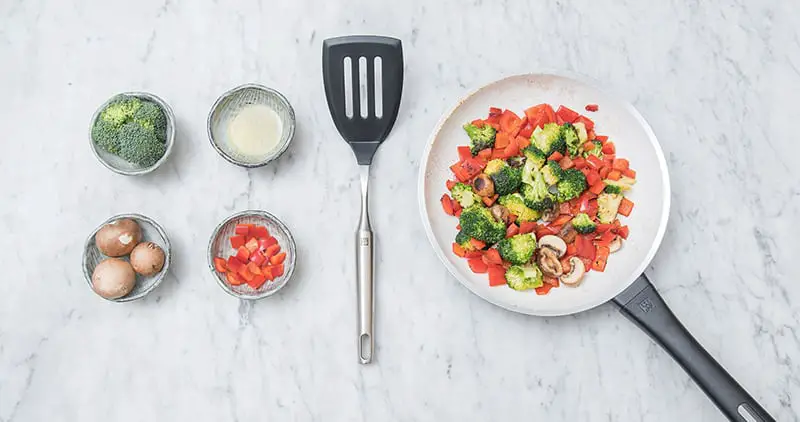
Ceramic-coated pans are simple metal pans with a silica sand-based gel cover. Ceramic-coated pans provide several advantages.
Ceramic-coated pans, like Teflon, resist sticking without the need for oil. As a result, you may reduce your calorie consumption, and it also washes off as readily as Teflon, saving time.
But the most significant advantage is that you won’t get any poisonous fumes if you overheat your pan! There is also no pollution of the ecosystem.
Ceramic pans, according to reports, release 60% less CO2 during manufacture than Teflon pans. There is also a vast range of forms, sizes, colors, and construction options.
#2 Cast Iron Pans
Another great Teflon substitute is cast iron. It is all-natural (no artificial coatings), affordable, adaptable, and long-lasting. It is also virtually as non-stick as Teflon when adequately seasoned.
Unlike traditional non-stick pans, cast iron produces a natural non-stick coating that improves with use.
You can make a smooth Teflon substitute with patience and a dab of vegetable oil. It is not relatively non-stick as Teflon or ceramic, but it is close.
It is also a one-time buy due to cast iron’s durability. You will never have to replace it if you maintain it properly. It is also reasonably priced. A $30 pan will outlive a set of Teflon or ceramic cookware.
Finally, cast iron retains heat well and works well on stovetops. Once heated, it is hot for a long time, browning and scorching food quickly. You may also use it on any cooktop.
#3 Stainless Steel
Many families and chefs throughout the globe use stainless steel because of its flexibility. You may also use it to substitute non-stick pans with a few easy tactics.
Unlike traditional non-stick pans, there is no coating to wear away or chip. Stainless steel, on the other hand, is lighter than cast iron. You also don’t have to be concerned with seasoning layers.
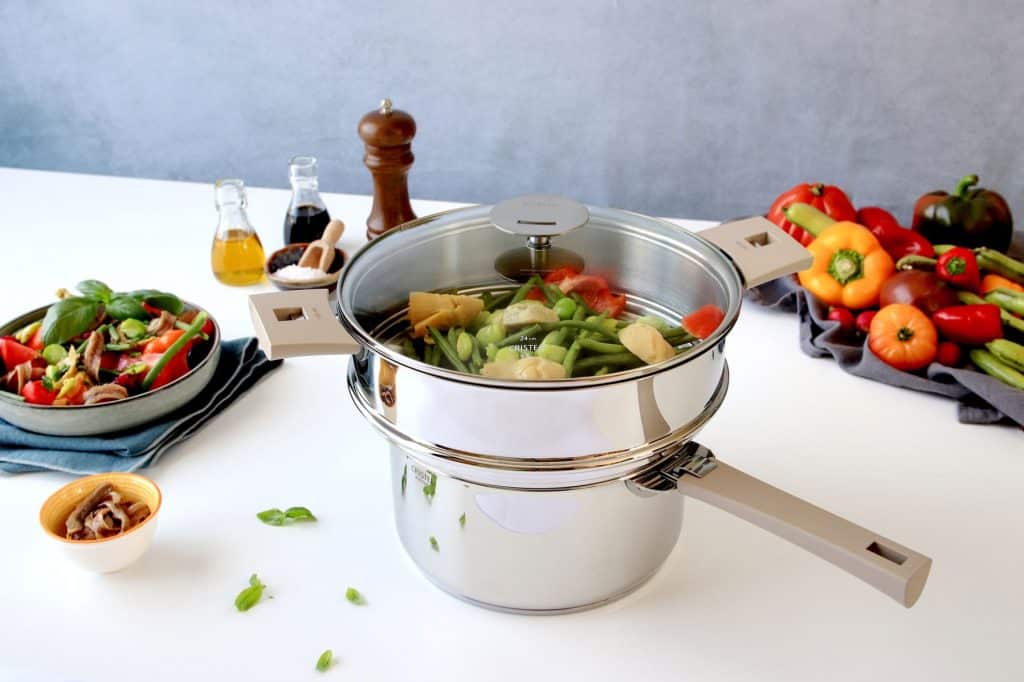
Because stainless steel does not rust, you can toss it in the dishwasher when you are short on time. It also works on all stovetops and ovens, so there is no need to be concerned about compatibility.
Steel comes in various forms, sizes, and performance levels, much like ceramic pans.

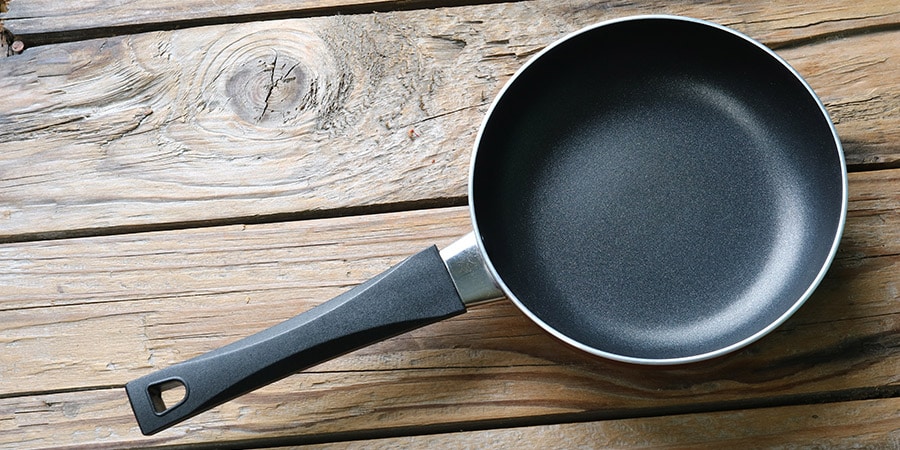






I actually said stainless steel, not aluminum.
I am a plastics engineer, so I know quite a bit about how different materials break down. Honestly, PTFE doesn’t worry me, however I will be looking into it a bit more. What does worry me is the breakdown of polycarbonate in food products, the precursor there is highly toxic. I just wanted to say though that your claim to switch to aluminum pots may be a step backwards. Any acidic conditions, i.e. tomato sauce will just break down the aluminum and you end up ingesting that. However, it is your choice! 🙂
Watching this documentary might help your investigation: https://thedevilweknow.com/
So, don’t heat naked teflon, keep it under 500 deg F
Yes but the point they made is that it breaks down before that, at closer to 450 degrees and that is within the normal range for cooking
If only it were that simple, Brian. Unfortunately, like the clip suggests, temperatures above 500 degrees are reached very quickly — more quickly than most would assume — and the nonstick coating begins to break down before the temperature even reaches 500.
>would you like a side of polytetrafluoroethylene or perfluorooctanoic acid with your eggs?
Mobius – Why use it at all when there are alternatives? Even if I probably won’t overheat it, I don’t take the chance. And that’s OK steven george, we all don’t. 🙂
OK – so none of you has ever read the proper instructions on how to use a non-stick pan then.
Firstly, non-stick pans should only be purchased when they are heavyweights. Any and every chef will tell you that lightweight pans are essentially useless: dropping food in immediately lowers the temperature of the pan, and food boils rather than fies.
So – throw out all those lightweight non-stick pans.
Stick with known-good brands like Le Creuset.
Secondly, non-stick pans must be used in the following manor (particularly over a gas flame):
The flame or element should be approximately half the size of the pan, AND NO MORE. Use only the lowest heat setting on gas, or a temperature which only JUST makes butter bubble if you drop a dob on it.
DO NOT ever turn the flame up to maximum.
Let the pan do the work – not the element. Cooking at too high a temperature is not good. Smoking pans are pans which are too hot. No pan should EVER smoke!
Whe3n you have finished cooking, do NOT drop the pan into water, or cool it quickly! Let the pan cool down naturally. This prolongs the lifetime of the non stick surface.
I think you will find that if you follow these simple rules, the temperature in the pan will NEVER exceed the temperature at which dangerous chemicals are released, or where the Teflon starts to denature.
It has been well-known for years that Teflon fumes will kill pet birds, even large parrots kept in rooms far away from the kitchen, if the Teflon pan is allowed to over-heat. If it kills birds, it probably doesn’t do us any good! Also, it’s used in countless other products, such as self-cleaning stoves and toaster ovens, not just pans. Watch for it!
Switch to Stainless steel Pans?
Strainless steel =
85% Iron
15% chromium
http://en.wikipedia.org/wiki/Stainless_steel
Okay happy with Iron as this is a required element for the body
but chromium? I don’t think it has an RDA.
Probably best off using cast iron.
That will keep your pecker up.
Regards
Stephen
Looks like I am wrong
We do need Chromium
http://en.wikipedia.org/wiki/Chromium
Trivalent chromium (Cr(III), or Cr3+) is required in trace amounts for sugar metabolism in humans (Glucose Tolerance Factor) and its deficiency may cause a disease called chromium deficiency. In contrast, hexavalent chromium is very toxic and mutagenic when inhaled as popularized by the film Erin Brockovich. Cr(VI) has not been established as a carcinogen when not inhaled but in solution it is well established as a cause of allergic contact dermatitis (ACD).[2]
I wonder what you get when you cook with stainless steel?
http://en.wikipedia.org/wiki/Chromium_deficiency
In the United States, the dietary guidelines for adequate daily chromium intake were lowered from 50-200 µg for an adult to 30- 35 µg (adult male) and to 20-25 µg (adult female).[1] Recently it has been shown that the popular dietary supplement chromium picolinate generates chromosome damage in hamster cells.
Oh well.
Still think I will stick with cast iron.
Excuse the pun. Teflon,stick, cast iron 🙂
No I don’t get out much.
Grin
Here’s an idea: Stop cooking your food! Cooked food isn’t really food. Check out this link:
http://www.foodnsport.com
If we stop cooking our food, think how the poor cows, chickens etc will suffer being eaten alive.. Grin
got here via SU…
Allen: Good point except for the fact that most of us eat meat. I dunno about you but raw chicken just doesn’t appeal…
And as far as the arguments against using stainless steel, or even aluminum, give me a break. No matter what, they are safer than Dupont’s poisons. Once these chemicals get inside of you they NEVER leave. PFOA is actually worse than their final product (teflon), hence the massive amount of cancer and birth defects with the Dupont factory workers.
Unfortunately, Dupont has a lot of clout with our Government. Hence the “2015” date they were given to “reduce” the amount of deadly and persistent chemicals they produce. 2015 might as well be an eternity away…
It’s 2016 right now, so 2015 May as well be an eternity away right?
Oh mygoodness I hate pans when they are full of Teflon
Lol oh my goodness my dad said that Teflon can give you or cause cancer so we havexpect a pan that is peelin and I told my dad there is hell no way you are using that pan so and so I gave him a better pan you know and I ha e like only 15 and I am trying to keep my dad healthy from all these pan’s. And our pans are a few years old bit they areally still in good condition bUT they are like so worked out that we might need to get some one pans
But I might throw away that one pan that I took away from my dad or go holiday it out in the yad
The fear-mongering here is ridiculous. Unless you have a very specialized need to exceed 350 degrees, in which you’d be using specialized cookware anyway, PTFE is perfectly safe. Do any of you seriously cook above 400 degrees on a stove top? Just because a “a generic non-stick frying pan preheated on a conventional, electric stovetop burner reached 736°F in three minutes and 20 seconds” doesn’t mean that’s a typical use case. That’s cranking the burner up to max and getting a worst case scenario. Think critically for a second.
One more thing to add in case anyone’s unsure of how hot they’re actually cooking. Most cooking oils will start to smoke or burn between 400 and 450 degrees.
How can you determine how hot is is actually getting? Envision cooling a steak, a pork chop. These things require time and a degree a high heat.
You can boil water in a paper cup. Understand how that is possible, and you can answer your own question.
why take the risk Jerry?
It is true that even in the industry the allowable working temperature is only up to 232C (449F). Must keep it below or else will poison the food.
Who is the author of the article??? I am doing a school report and we need sources.
Cast iron, glass, ceramic all the way!
So which type nonstick cookware actually safe for cooking with high heat?
Here’s the primary problem. DuPont knew all of this decades ago and continued to poison people until studies revealed that literally everyone on the planet has PFC in their blood and got it from the use of Teflon pans, stain resistant clothes and school uniforms even the military used it in munitions and the numerous siege weaponry and vehicles. It wasn’t until the early 2000’s that DuPont even acknowledge any of this (as a result of insurmountable evidence) and stopped using the chemical Polytetrafluoroethylene (PTFE). But then of course they replaced it with an equally dangerous chemical called Perfluorooctanoic Acid (PFOA) There’s even evidence that has surfaced alleging DuPont had pregnant female factory workers give birth to highly deformed children as a result of the direct exposure to (PTFE). Most of the babies born had an insanely high amount of the chemical in the blood. Teflon is Forever
Watch the movie / documentary called Dark Waters starring Mark Ruffalo. It shows the legal battle between DuPont and the citizens of a West Virginia town after DuPont contaminated their town. It shows the 20 year battle with DuPont and their product Teflon, showing Teflon caused many forms of cancer in the people of the town and the employees of DuPont. Also deformities in newborn children of the women employees.
Pretty scary. And even scarier if Teflon is still being used today.
I just saw this documentary at the Whole Earth Festival regarding Teflon and Dupont. It’s pretty good.
https://thedevilweknow.com/
I find that teflons are incredibly overrated, iron pans covered in oil work much better, and they don’t stick at all. Iron has much better heat conductivity, and the pan gets heated up quicker and hotter, and hence making the food taste better. Eggs and meat cooked in iron pan are simply delicious.
Look for “Carbon Steel” pans. In exchange for some occasional maintenance, you’ll get something that, although admittedly not as non-stick as a bran new Teflon, will give you a safe surface allowing you to slide eggs and omelets pretty well, and also crank the temperature up to get the sear you need. The pan lasts forever, but you’ll need to acquire a little bit of knowledge in order to take care of it (all available on youtube).
If you’re unsure about the dangers of Teflon, PTFE, PTFA or C8, watch the movie ‘DARK Waters’ (Amazon prime video) starring Matk Ruffalo and Tim Robbins.
People nowadays are searching for non-stick cookware, but it is quite tough to find a non-stick set without a teflon coating. So don’t run after cheap no-stick cookware as only a few brands offer teflon-free non-stick cookware like Greenpan, Vermi, etc. So, I personally use normal stainless steel pots and pans.